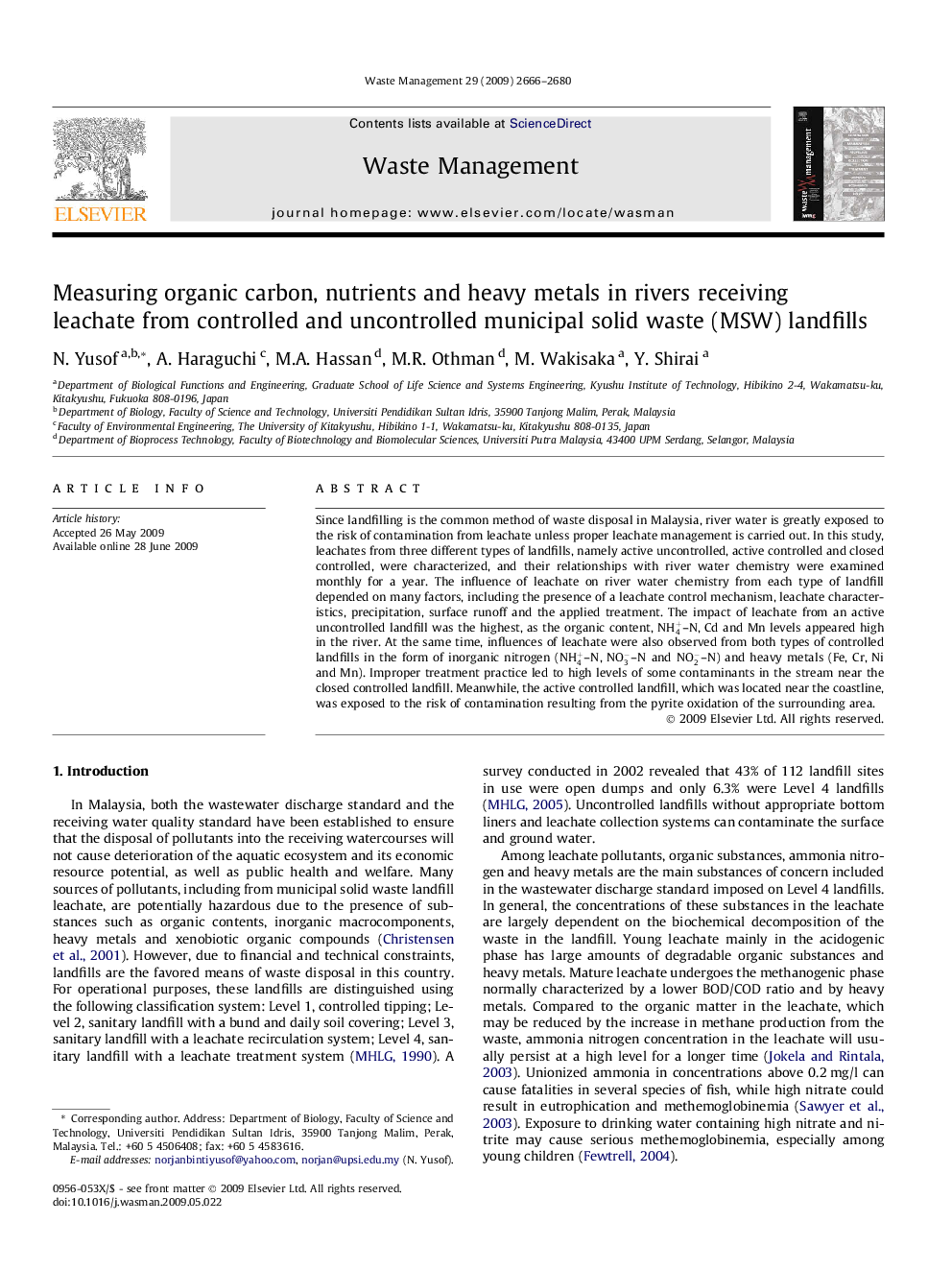| Article ID | Journal | Published Year | Pages | File Type |
|---|---|---|---|---|
| 4472871 | Waste Management | 2009 | 15 Pages |
Since landfilling is the common method of waste disposal in Malaysia, river water is greatly exposed to the risk of contamination from leachate unless proper leachate management is carried out. In this study, leachates from three different types of landfills, namely active uncontrolled, active controlled and closed controlled, were characterized, and their relationships with river water chemistry were examined monthly for a year. The influence of leachate on river water chemistry from each type of landfill depended on many factors, including the presence of a leachate control mechanism, leachate characteristics, precipitation, surface runoff and the applied treatment. The impact of leachate from an active uncontrolled landfill was the highest, as the organic content, NH4+–N, Cd and Mn levels appeared high in the river. At the same time, influences of leachate were also observed from both types of controlled landfills in the form of inorganic nitrogen (NH4+–N, NO3-–N and NO2-–N) and heavy metals (Fe, Cr, Ni and Mn). Improper treatment practice led to high levels of some contaminants in the stream near the closed controlled landfill. Meanwhile, the active controlled landfill, which was located near the coastline, was exposed to the risk of contamination resulting from the pyrite oxidation of the surrounding area.
